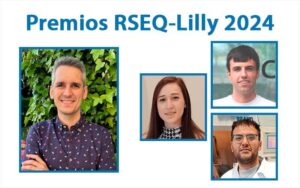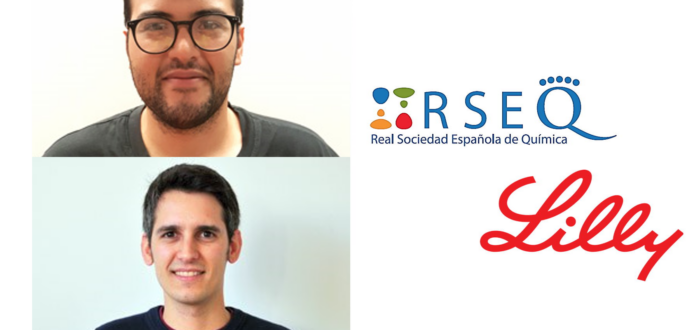Last week, the Real Sociedad Española de Química (RSEQ) and Lilly announced that Dr. Marc Garcia-Borràs received the Premio Lilly Joven de Investigación 2024 for his outstanding scientific career on computational modeling of biochemical and biocatalytic processes, with the aim of understanding, designing and implementing new enzymatic activities. This prize is rewarded annually to young Spanish researchers (under the age of 40) that have shown excellent scientific quality and stand out for their professional career. He will receive the award during the XXXVII Reunión Bienal of the Real Sociedad Española de Química, which will take place in San Sebastián at the end of May. This is the third time that this honour has been bestowed on a IQCC researcher: in 2019 Prof. Sílvia Osuna received the award and in 2016 Dr. Anna Company received the award.
Congratulations Marc!

In his PhD studies, Andrea is developing new methodologies based on enantioselective C(sp3)-H bond oxidation with biologically inspired catalysts under the supervision of
Prof. Miquel Costas and Prof. Massimo Bietti from Università degli Studi di Roma “Tor Vergata.”
Inspired by nature, the development of biomimetic iron and manganese catalysts that reproduce basic aspects of the reaction mechanisms of oxygenase enzymes is emerging as a promising technology for enantioselective C-H bond oxidation. Biomimetic manganese catalysts have been applied to enable the enantioselective hydroxylation of unactivated tertiary C-H bonds in cis-3,5-dimethylcyclohexane derivatives, resulting in the generation of multiple stereocenters in a single step. The reaction demonstrates high tolerance to a broad range of functionalities, producing the corresponding oxygenated products in preparative yields and excellent enantioselectivities (up to >99% ee). Furthermore, the study was extended to the oxidation of tertiary C-H bonds adjacent to methoxy groups in cis-3,5-dimethoxycyclohexane derivatives, allowing for the generation of chiral oxygenated products with levels of selectivity that compare favorably with enzymatic approaches for the desymmetrization of meso-oxygenated substrates. Currently, C-H oxidation adjacent to methoxy groups is being applied for the generation of chiral carbohydrates.
Congratulations Andrea!
Girona, June 25, 2024
For more info: ges.iqcc@udg.edu


